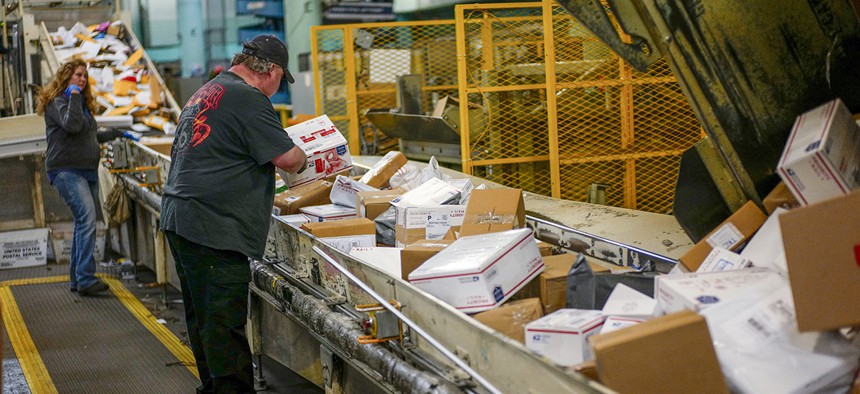Report: Post Offices Should Automate Pen-and-Paper Safety Checks

Steve Robino arranges packages on a conveyor belt at the main post office in Omaha, Neb., Thursday, Dec. 14, 2017. Nati Harnik/AP
Automating compliance checklists could save time and result in better data, the Postal Service inspector general found.
U.S. Postal Service workers still inspect potential safety hazards and manage equipment using printed checklists, but trading in the pen and paper for a mobile device would make the process more efficient and accurate, researchers found.
In recent years, the Capital Metro Postal Service has increased the number of safety policies, procedures and standards employees must follow. But as requirements grow, so too has the burden of manually entering checklist data into the computer system.
Automating this process with a survey product like Qualtrics or SurveyGizmo would streamline the system, reduce human error and make it easier to analyze data, according to a Postal Service Inspector General report.
Managers reported that the number of area-specific manual checklists has increased at each of the Capital Metro’s nearly 3,000 facilities located in Atlanta, Baltimore, D.C., Virginia and the Carolinas. Despite the rise in requirements, the pen-and-paper process of submitting compliance reports hasn’t changed.
“As a result of not integrating automated tools and techniques, management may be missing opportunities to collect data in a more efficient, timely manner and with fewer errors,” auditors wrote in the report.
In addition to speeding up the submission process, automation would give managers the ability to rapidly analyze checklist data and immediately address issues that arise. The analysis tools built into most survey software also allows for a cleaner presentation of response data.
The IG recommended the Postal Service begin testing programs to automate the manual checklist process, and Capital Metro management is shooting to launch its first pilot by April 30.
NEXT STORY: Pentagon Seeks Laser-Powered Bat Drones



